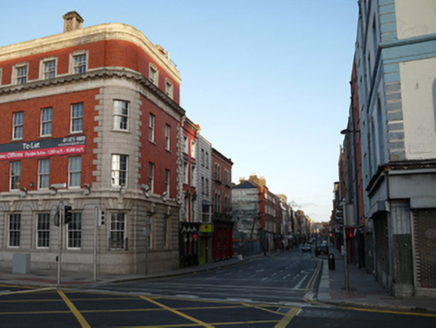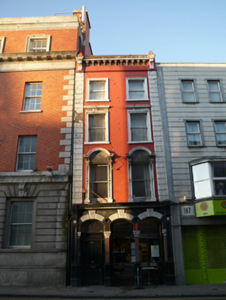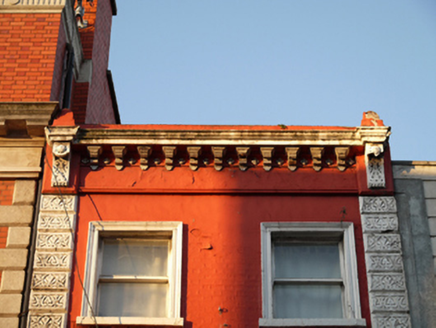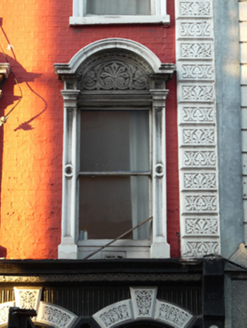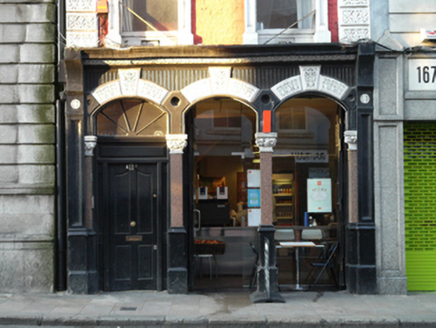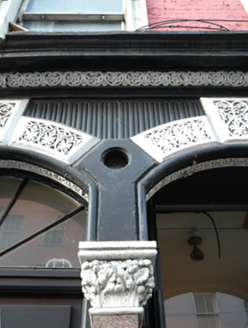Survey Data
Reg No
50010360
Rating
Regional
Categories of Special Interest
Architectural, Artistic, Social
Original Use
House
In Use As
Restaurant
Date
1800 - 1840
Coordinates
315389, 234267
Date Recorded
22/11/2011
Date Updated
--/--/--
Description
Terraced two-bay four-storey house, built c.1820, having early nineteenth-century render shopfront, and embellished c.1870. Now in use as café/restaurant with accommodation over. Hipped slate roof concealed by rendered parapet with deep cornice, decorative console brackets to ends and modillions. Red brick walls laid in Flemish bond with rusticated channelled quoin bands with inlaid floral decoration. Diminishing square-headed window openings with moulded render surrounds, granite sills and single-pane timber sliding sash windows. Moulded render cornices to second floor openings and moulded render camber-headed pediments to first floor openings over panelled pilasters and foliate tympanum. Cornice to shopfront forming sill band to first floor openings. Three bay shopfront to ground floor comprising moulded cornice with terminal console brackets over panelled pilasters framing segmental-arch arcade with low-relief decorations to arch heads and keystones supported by engaged granite clad pilasters with moulded capitals on high plinths. Square-headed window openings with fixed single-pane display windows. Camber-headed door opening having moulded rendered surround flanked by granite clad pilasters, timber panelled door with side panels and spoked timber–framed overlight.
Appraisal
This pleasantly proportioned house, which is now in use as a restaurant, has retained a great deal of historic form and character. The elegant nineteenth-century facade has survived largely intact and is in good condition and makes an important contribution to the appearance of the streetscape. Capel Street itself was laid out by Humphrey Jervis to link the new Essex Bridge (now Grattan Bridge) (1678) to the Great North Road. Originally a fashionable residential street of houses it became largely commercialized around 1800. It frames an important vista to the south on axis with City Hall.
